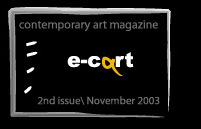

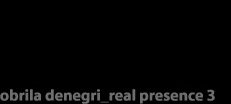



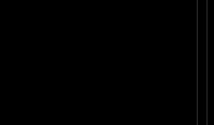


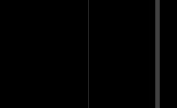
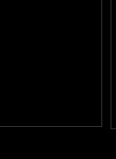










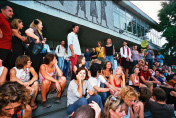
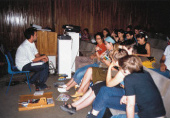
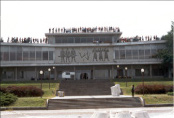
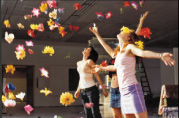





During the late '60s and beginning of '70s Biljana Tomic organised a series
of international programs within Belgrade Theatre Festival - BITEF, presenting
some of then emerging and avant-garde movements and its protagonists. Therefore
were present or exhibited artists from Arte Povera movement, such as Michelangelo
Pistoletto, Jannis Kounellis, Alighiero Boetti, Gino De Dominicis, Mario Merz,
Emilio Prini, Giulio Paolini, invited by critics Germano Celant and Achille
Bonito Oliva. Also were present and exhibited some of protagonists of currents
like Happening and Fluxus, minimal and land art, conceptual and body art:
Carl Andre, Ben, John Baldessari, Robert Barry, Daniel Buren, Christo, Giuseppe
Chiari, Hanne Darboven, Jan Dibbets, van Elk, Luciano Fabro, Barry Flanagan,
Douglas Hubler, Joseph Kosuth, Richard Long, John Latham, Sol LeWitt, Laurence
Weiner, as well as Video Gallery of Garry Schum and many others.
As the Students Cultural Centre was opened, from 1972 Biljana Tomic and group
of collaborators started "April Meetings" continuing the same multimedia
festival/event conception based on idea of "expanded media" (as
a paraphrase of than cult book "Expanded Cinema" by Gene Youngblood).
So within "April Meetings" parallelly with artists that were presented
before, such as group OHO from Slovenia, Braco Dimitrijevic, Goran Trbuljak,
Dalibor Martinis, Sanja Ivekovic from Zagreb, "group of six" from
Belgrade among which exhibited initially Marina Abramovic, were shown also
international artists: "Art and Language" and other conceptualists
presented by Catherine Millet, Gina Pane with one of first performances, Joseph
Beuys, Luigi Ontani, Francesco Clemente, and many others…
Within this framework, with Joseph Beuys in '74 started collaboration with
Dusseldorf Academy, and in next years other artists, such as Katarina Sieverding
and Klaus Rinke were in Belgrade too, making performances and presentations.
During the following period Gallery of SCC conceived its activity also as
the laboratory that involved emerging generations of artists that were mostly
students of artists that exhibited before. This praxis continued through the
'80s but also through the '90s in spite of war and cultural embargo.
"Real Presence - Generation 2001" realised in Belgrade in the summer
2001 was the first huge young artists and students workshop after democratic
changes in Yugoslavia. Conceptually it was based on this cultural and historical
background and in a long tradition of open multimedia programs conceived as
meeting points and places for free communication, collaboration and friendship.
On the beginning of '90s, war and dissolution of Yugoslavia changed radically
art scene and its ways of functioning, provoking closeness, isolation and
impossibility to maintain frequent cultural exchange and activity. Even after
the suspension of cultural embargo the "virtual enclosure" became
a part of scene, its rule, felling, a certain state of mind...
After ten years we felt an urge to underline a need for "real presence"
of new and fresh creative artistic spirit. That's why we decided to invite
emerging generations of artists from different countries and cultural backgrounds,
to come in Belgrade in wider possible number, to stay and work together...
and represent in a symbolical way a first step for bridging the gap created
during last decade.
The basic idea was to invite people whose work we already knew, or who have
been in Belgrade before, but also to keep wide margin, so who ever was interested
could participate as well. We didn't wanted to give any qualitative or judging
criteria a priori, nor a theme or direction in which artists should work.
Rather we wanted to create situation which could permit anyone to work, act
or improvise as he/she feels like, using any expressive media. The workshop
was imagined as permanent program with daily presentations, performances,
actions, parties, and in the end, with one-day exhibitions in Museum 25th
May and other available spaces.
The first edition of the workshop started with collective action "Real
Presence Plateau" which was, on the one hand a homage to Harald Szeemann,
who opened the manifestation and to his "Plateau of Humankind",
and on the other, it was an action of affirming "real presence"
of almost three hundred young artists and students from all over the world
in Belgrade in a beautiful sunny morning of late August 2001. This initial
action created particular cohesion, so following weeks were filled with extremely
intense programs and amazing, heroic, extraordinary or witty projects, performances,
actions or events. As curators we decided not to impose any restrictions and
to leave participants to choose space and situation that suits them better.
In this way artists themselves could decide and negotiate how to realize and
install works and interfere one with other. Actually from this came out most
interesting situations, different works were mixed, artists interacted with
spaces and works, creating special exhibitive dynamics that concluded in the
final exhibition lasting just one day.
First edition was really like a breakthrough so we decided to go on with this
initiative, but to give it always a new shape. So in the following year we
made part of "Gasthof", realised by Steadel Schule in Frankfurt
that got together a great number of students, professors and curators of big
events of that summer such as "Manifesta 4" and "Documenta
11". This connection resulted in the "Real Presence 2 & Flashback
Gasthof" - a workshop that gathered about hundred young artists from
Island, Singapore and other European art academies that took part year before.
This edition was dedicated to the possibility of constructing "communicative
environments and sites" via artistic interventions and exploring the
modalities through which an exhibition becomes a generator of a community.
Two editions of "Real Presence" lead us in a way to the third one,
in which we wanted to try out a different approach by asking participants
of previous workshops to forward invitation to their colleagues. This created
a sort of echo situation that confirmed the necessity for this kind of encounters
among young generation of artists and students. "Real Presence - Generation
2003" gathered about hounded participants from Albania, Armenia, Austria,
Czech Republic, Denmark, Finland, Germany, Great Britain, Italy, Romania,
Singapore, Slovenia, South Africa and Switzerland as well as from different
academies and art schools from Serbia and Montenegro (Belgrade, Cetinje, Novi
Sad, Sabac and Zvecani). It structure was quite similar to pervious two editions,
and it consisted of presentations of the single artists and groups, that enabled
participants to get to know each other through the work and to start up in
this way discussion and collaboration. At the same time workshop consisted
in the realisation of the works and interventions in the exhibitive space
of museum as well as in the various other contexts of the city. Some of this
interventions looked for the direct contact with the social context, with
the city and the citizens: German artists Julia Ruther and Valerie Krause
realised interactive event entitled "Typically German" at the green
market of Belgrade, Markus Fredl interrogated passer-bys about his origin,
while shooting a video footage, meanwhile Anglo Italian Francesca D. Show
(coming from Rehberger class in Frankfurt) engaged a series of encounters
with inhabitants of buildings near museum, with questioner about their wishes
to improve their lifes. The final result (chosen by the artist) was a wish
to have more "SVIRKE" - more live concerts in the area. At the same
time, the fascinating building of ex-Tito's Museum was going through process
of transformation: this was probably a rare - if not unique - moment in which
young artists could have on disposal entire museum for them selves - to use
it as a live space, as a permanent laboratory, a meeting point, a place to
work and stay, have a dinner and late evening discussions. It had a bar organised
by Sepp R. Brudermann and Heldi Prema, a series of environmental and outdoor
interventions by Matti Blind, Tsolak Topchyan and Andrej Cikala, Raluca Davidel
and Lau Wai Yuen Urlich, Severin Weiser that put into question various aspects
of its' architecture, history and present use; there were also large indoor
installations created as intimate spaces, communicational spaces, spaces of
memory and of interaction, realised by: Franz and Heidi Kapfer, Andrej Cikala,
Melanie Schiefer, Christiane Rasch, Lena Willikens, Ellen Hutzenlaub, Hanna
Hildebrand, Heike Bollig, Eduard Costantin, Silvia Costiuc, Augusta Costiuc
Radosav, Alexandra Demetriu, Luka Kulic, Ivan Sabo, Vladimir Ckonjovic, Zorica
Colic, Monika Sigeti, Cecilija Haizler, Milica Benic, Lau Wai Yuen Urlich,
Italian group AENAO created by Alessandro Mancassola, Giorgia Boller, Thanos
Zakopoulos and Riccardo Fabiani. Through performances and symbolical healing
and cleaning actions artists like Katja Majer and Jana Baraga, or Ivana Fassoni
and Giorgia Boller dealt with the hurt "body" of Belgrade; on the
other hand Tuulia Susiaho brought into contact and collision two different
cultures through collective performance of singing Finnish karaoke. For Nina
Wengel and Tijana Miškovic this was a chance to start up interactive
web site, Anna Paola Passerini invited participants of Belgrade workshop to
make part of a similar initiative in Verona extending the boundaries of the
"real presence" and enlarging the network that this project wishes
to create.
Dobrila Denegri
|
|
 |
|
|
|||||||||||||||||||||||||||||
 |
 |
|
|
|||||||||||||||||||||||||||||
 |
 |
 |
|
|||||||||||||||||||||||||||||
|
|
|
|||||||||||||||||||||||||||||||
|
|
|
|||||||||||||||||||||||||||||||
|
|
|
 |
|
|
||||||||||||||||||||||||||||
 |
 |
|
|
|||||||||||||||||||||||||||||
 |
 |
 |
|
|||||||||||||||||||||||||||||
 |
|
|||||||||||||||||||||||||||||||
|
|
 |
|
||||||||||||||||||||||||||||||
|
|
|
|
 |
|
|
|||||||||||||||||||||||||||
 |
|
|
|
|||||||||||||||||||||||||||||
|
|
 |
 |
|
|||||||||||||||||||||||||||||
 |
 |
|
|
|
||||||||||||||||||||||||||||
| |
|
|
||||||||||||||||||||||||||||||
|
|
 |
|
||||||||||||||||||||||||||||||
 |
|
|||||||||||||||||||||||||||||||
|
|
|
|||||||||||||||||||||||||||||||
|
|
|
|||||||||||||||||||||||||||||||
|
|
 |
|
 |
|
 |
|
 |
 |
|
|||||||||||||||||||||||
 |
 |
 |
 |
|
||||||||||||||||||||||||||||
|
|
|
|
|
|
|
|
|
|
|
|
|
|
|
|
|
|
|
|
|
|
|
|
|
|
|
|
|
|
|
|
|
|